I decided to post these notes about the day as a help to anyone else getting close to their check ride.
I offer them primarily to re-enforce the fact that you ARE ready!
Nerves are
great before the check ride, but uncertainty isn't. Remember, your instructor
would not have scheduled you and let you go unless he or she were damned
sure that you had a high probability of passing.
Each check ride will be different, and each examiner will be different,
so don't be surprised if your experience is different!
By the way, if you would like to share you checkride experience, email
it to me at flight@ravenware.com and
I will post it for you. And if you enjoy this, read my experiences buying
an airplane and my ongoing flights in my own pretty airplane, a Mooney 231, in
my Flight
Log
back to Aviation Home
Leading up to the day:
I worked hard for this, taking longer than I would have liked, 1.4 years,
roughly 80 flight hours. My training was broken up by (1) changing flight
instructors
when my original got an airline job (2) a terrible Northern California winter
that kept me on the ground for a solid month and a half and (3) a job that
does not let me get away that often during the week. I was ready for the
ride, and
I wanted very much to pass and get on with the reality of being a pilot and
taking the repetitive training scenarios into the real world of picking
a place to go,
planning, and going. And when I started my training I was 44, didn't want
the check ride to wait until I was 50!
I flew every day for 5 days leading up to the check ride. Might not seem like a lot to others, but I often went a week or more before lessons. This truly sharpened up my skills, and I would recommend it to anyone. I might also suggest laying off the book work, cramming for the oral is somewhat silly, since the examiner is going to ask you perhaps 30 questions
. 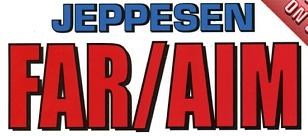
Deciding which area to study in the FAR/AIM, your private pilot instruction book, charts, and so on that the examiner might cover is somewhat hit and miss. Do a little reading on areas that are the most troublesome to you (the damned 4 pane weather charts, in my case) but don't assume that the examiner is going to ask you anything about it. Again, your instructor thinks you're ready, you've passed your written. The oral exam is NOT a multiple-choice test, my personal experience and the experience of others, combined with what various examiners have written on line and elsewhere, makes it clear that the examiner is not looking for an exact, word for word, answer to questions. He or she is looking for understanding, an overall sense that you have the knowledge required for flying, and finally looking for your ability to determine the right answer if you're unsure.
Your job during the oral portion of the exam is to demonstrate to the examiner
that the thought process you have before taking to the air is safe and complete.
So think about that, think about what you would think about before you go
out on your own. Is the airplane ready? What speeds do I need to know? Am
I ready? What's the weather like? What convinces me (and by extension, the
examiner) that a flight is a safe and prudent thing to do.
Two days before:
I called the examiner and asked him (I'm not naming the examiner in these
notes. He's a great guy, and it was a very positive experience, but I want
to focus
on the process, not the person) for the destination he wanted me to flight
plan for. I also asked him "How much do you and the gear you will be
bringing on the flight weight?" Didn't have to, could have waited to
the day of the flight to finish up weight and balance, but why not put a
positive
impression
in the examiner's mind before you even meet? Being a little ahead of the
process (like your instructor harping on you to stay ahead of the airplane)
can't be
bad.
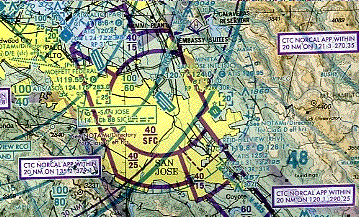
My flight plan was from Reid-Hillview Airport (KRHV) to Fresno International
Airport (KFAT). If you look at a San Francisco sectional chart, you'll see
that this is a pretty straightforward flight. For those who want to follow
along on
a chart and understand my thinking for my checkpoint
RHV - starting point, naturally
TOC - Beginning of reservoir south of RHV. Straight book performance numbers
for the climb, showed him the table.
Direct to Fraiser Lake airfield - I like using Fraz Lake as a checkpoint
because it has a seaplane training "strip", and that 3,000 ft long
straight ribbon of water reflects very well and is visible from far out.
East to San Luis reservoir - Over the mountains, then the first big thing
to see is the reservoir. There is a very visible dam at the east end to
mark your
timer stop/start
Slight right turn to Los Banos Airfield - Not too far from San Luis (about
10 miles) but again, easy to see and may as well start a new leg over a very
visible
marker.
Direct to Chapman airfield - This was planned as a VOR radial interception
checkpoint
Direct to Hwy 5 intersection
Right turn, direct to TOD and KFAT
I planned strategically, to insure that I wasn't leaving anything out of
the examiner's eyes. Don't make the examiner guess if you know how to use
a VOR as a checkpoint,
include it in your plan! Don't make him guess and ask you if you have done
your required research on the runway at the destination, draw it on your
navigation sheet, with length and width.
If you are looking at a San Francisco sectional, you might wonder why I didn't
go direct from San Luis or Los Banos to KFAT. Well, this was another strategic
decision. Here's my explanation to the examiner, again, done to insure that
he understood not only could I draw lines on a chart, but I was thinking
about what
I was doing, being safe and practical for my experience level;
" I could go straight from Los Banos to KFAT. But if you look at the chart, it shows almost solid green, with very few roads or other landmarks. Not much to choose from for checkpoints or to verify that I'm still on course. So I chose to have some clear paralleling landmarks, the highways, as well as the checkpoints, this matches my experience level and my lack of familiarity with the Fresno area. I also measured the two routes, mine and the direct, and mine is about 5 miles longer, a trivial amount of time but gives me more ways to stay on track."
In other words, this wasn't random, I planned safely and prudently based on my experience level and knowledge.
Wrote up the true headings, distances, and all the data I could on my planning
chart now. I could wait until the morning of flight, but why stress?
By the way, just plan one direction unless your examiner specifically says
to plan a round-trip. Your check ride pilot is going to break you out of
your planned
course pretty early in the flight, the examiner pilot just wants to know
that you know how to accurately plan a flight and go through a segment or
two. Don't
double your stress by doing a complete flight plan to the destination and
a return. Also, you're doubling the opportunity to make a mistake!
The Day:
The day started out poorly, planning-wise. I had set my alarm clock for
6:30 to be at the flight school by 9 . When I set the alarm the night before,
I accidentally hit the "time zone" button also, and moved myself
to Mountain time. I got up at what I thought was 6:30, but was really 5:30.
Realized
it after making
coffee, quickly dove back into bed for the additional 50 minutes of sleep
that I knew I could use.
Then, as I was drinking my coffee at 7:30, I logged on to DUATS to get the
latest weather and winds aloft so I could print them out before leaving for
the school.
" Winds aloft data not currently available"
" Winds aloft data not currently available"
" Winds aloft data not currently available"
for 20 minutes! Starting to get a little flopsweat going. Finally
come up, printed the weather, and left.
![]()
Got to flight school and realized I had forgotten the most important thing!
In my prep, I had my log with appropriate pages tagged, full flight plan,
current charts & AF/D, all the associated hardware, what had I forgotten?
Yes, the fee for the check ride examiner! Quick side trip to a nearby grocery
store
to
get $400 from the ATM.
Arrived at the flight school at 9, one hour before the examiner would be
appearing. Went through the final phase of flight planning, laying in current
winds aloft
to finalize headings, times, and fuel burns.
Had time to spare, spent it reviewing the AIM, somewhat at random.
Flight examiner arrived at 10.
Paperwork and process
First things first. He very methodically went over my paperwork,
double checking every box on my application, and insuring that it matched
my medical
and
my pilot log book. Corrected my flight instructors spelling of "grey" (my hair
color) to "gray", the approved FAA spelling, even though my medical
spelled it "grey". His goal was to insure that, if I passed,
my application would not be kicked back because of some FAA clerk being
grumpy
about spelling.
Having spent 10 years in government service in the USAF and knowing those
gs-7 clerks, I appreciate his care.
He then explained very clearly what was going to happen today. He described
what passing and failing was for each aspect of the exam (planning, oral
questions,
and practical examination). Emphasized that he wanted to see a safely flown,
well thought out flight, not simply a series of random flight maneuvers
that matched the PTS. Talked specifically about failing, and what would
be the
result if I
failed the check ride, again, emphasizing that this was not the end of
the world, and a re-check after working with my instructor would be painless.
But lets get
it right today. Also spoke of an inadvertent blown checkride, for example,
the weather closing in below VFR minimums or a instrument failure. Checkride
would
be over, sorry, come back again for another try.
Oral questions. Each subject area in turn, from aircraft to systems to
regs to weather.
Aircraft
Started with the aircraft "Show me the aircraft is ready to
fly".
Straightforward, went to each inspection in the logs and pointed it out.
No more questions, since
I had covered everything that should be covered.
Standard currency questions, flight & medical. Did not ask about generalities,
but about me, i.e., "This is your medical certificate, when do you
need to renew?"
He got very specific on night currency, "Yes, 3 landings, but do you
need 3 take off's also?" Hmmm, hadn't thought about it. Said I didn't
remember, asked of I could look it up in the FAR. He said "yes",
and when I was close (within 2 pages) he said "You're looking in the
right place, you could find it, here's the answer.....". His point was,
as he explained, what if you were sharing a night flight with another pilot
you both needed the takeoffs and landings coupled or it wasn't really currency.
I emphasis this because once again, he was not trying to trip me up,
he was helping me be clear on real-world requirements.
Aircraft performance questions.
What is Vx, definition and speed
What is Vy, definition and speed
What is Va, definition and speed
For all of these he really wanted to know what it meant and where you would
consider this information important. Vx is this speed and this climb, but
why does it
matter? Again, very clearly his goal was to make sure you knew the why,
not just the numbers.
Systems
What type of electrical system does your aircraft have?
Under what circumstance would you turn the master electrical switch off
in flight?
Would the engine be affected?
How do you know what equipment is required on your aircraft?
How do you handle a malfunctioning piece of equipment on the aircraft on
the ground, before flight?
If something required breaks and you're off your home field, how can you
get the aircraft back?
Medical questions
What is hypoxia?
How would you know you are suffering from it?
What would you do if your passenger began to hyperventilate? I had
no clue. He gave me some ideas.
Airspace System
This was all done with a sectional chart in front of us.
Points at uncontrolled magenta airport - What class airspace is this airfield?
Points to KFAT (Fresno International class C) - What about this?
How would you establish communication?
Points to KSFO (San Francisco Intl, Class B) - What about this?
How would you establish communication?
Points at isogonic line - what is this?
Points to restricted area - can we fly here?
Points to MOA - can we fly here?
Weather
"Is it OK to fly our route? Show me."
Asks about TFRs and notams. Fortunately there was a firefighting TFR to explain.
Looked over the flight plan and chart describing route. I told him my thought
process. No questions, just checking it for completeness.
OK, time to go fly. I had already preflighted the aircraft, so he sent
me on ahead to get to the point just shy of lighting the fire.
Went to the latrine first.....
The Flight
Preflight briefing from him:
" YOU are PIC throughout the flight. In a real emergency
it's yours. I will not be taking the controls at all except to set you
up for unusual attitudes"
" I do not need a passenger briefing, and I do not need to test the brakes."
He also had made it clear that he didn't intend to talk a lot, so just go fly
until he tells me to do something.
Normal engine start. Call ground, request clearance to taxi.
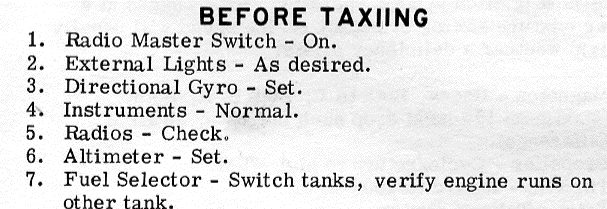
Taxi, no commentary.
Run up, not a peep.
Ready to roll to the hold bars. No traffic at the airport, he indicates that
we'll stay here for the beginning of the flight and knock out the landings.
1st take off- short field takeoff
1st landing - Planned to be soft field. Kinda spranged it, he forgivingly
said "We'll
count that as the normal landing", touch and go for the next loop.
2nd landing - soft field, executed successfully, full stop, taxi back.
Soft field take off, into the pattern
Halfway down the downwind, simulated engine failure to landing. Taxi
back
Normal Takeoff, begin planned flight.
Modified proposed flight plan to use 3,500 instead of 5,500.
Got to first checkpoint, logged it and started timer for next leg
Diverted to Watsonville, did calculations and headings out loud. By the way,
one of the things he was looking for on the diversion was my paying attention
to the whole picture, not just the task at hand. Had I diverted at once to
Watsonville, I would have flown straight through San Jose's Class C airspace.
He was insuring that I didn't fixate on one task, but paid attention to everything.
I noted the Class C, and told him I would begin my diversion after passing
the end.
Flew diversion to Watsonville airfield.
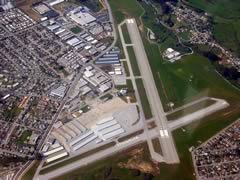
Once over Watsonville, aimed me at a very clear and distinctive mining
gash on northern hills, began slow flight portion.
Slow flight speed 55 knots. Archer can slow fly at 49-51, obviously wanted
to both give me a little padding and also make sure I met the PTS by
not dropping
below 55 without being near a stall.
90 degrees left, 90 degrees right (back to aim point).
Power off stall, recovery
Turning stall to right (10 degrees of bank max), recovery
Turn back to north
Engine failure. Since we're still almost right over Watsonville airfield,
the decision on where to land was almost too easy. Engine out landing
at Watsonville, full stop.
My emergency landing at Watsonville was not my best. I was way too high
on final, and slipping in to make the runway. I really thought I wasn't
going
to make it
(even though the runway is 5,000 ft) and was going to go around, but
the examiner was adamant that I could make it and should make it. I slipped
like a mad person and dropped in on the 2nd half of the 5,000 ft. runway.
We did, but this again showed me that he really was here to help me pass
(if I was competent) instead of there to fail me. An important distinction.
Taxi back to 20
Well, almost back to 20. This was my first landing at Watsonville (surprisingly since it's 30 miles away from my home 'drome), and after I started the takeoff roll I realized that I hadn't quite gotten to the end of the runway, I was taking off from a taxiway intersection about 1,200 from the end (still leaves me 4,000 ft to take off with). Acted like I planned it, didn't say anything, took off. No comment.
Normal takeoff from 20 with downwind departure
Steep turns, first left, then right. No pause, left steep turn immediately
into right steep turn. My instructor had prepared me for that.
Put on hood, time for instrument reference.
90 degree turn to left
90 turn to right
Next task, track SJC VOR inbound, he set radios and idented, just wanted
to make sure I knew how to find the radial and turn to it.
Unusual attitudes, nose down first, nose up second.
Hood work was almost the easiest part of the test.
Now near UTC (common VFR tower reference point) at 3,500, said "take us
back to R-H".
4 miles from R-H said "no flaps landing".
Did R-H approach no flaps. An aircraft ahead stayed too long on runway,
tower told us to go-around.
Completed the no flaps landing from pattern. He didn't like my no-flap
approach, and coached me on it while we were taxiing back.
Taxi to parking no action
Secure no action
Back in the flight school.
I give him my log book, and go off to the restroom.
Get back, he's filling out the White paper, not the pink! I passed!
Get License!
And that was it! Log book time 1.3 hours. Much less grueling, frustrating,
than a regular lesson!
Keep in mind, most of your flights with someone else have been with someone
who is working hard to make you better, and that can be tough. The examiner
is just
there to see what you can do, it'll be easier than you think.
Hope this gave some good perspective, and again, please feel free to
email me your check ride notes for posting here!
C.K. Haun
2003
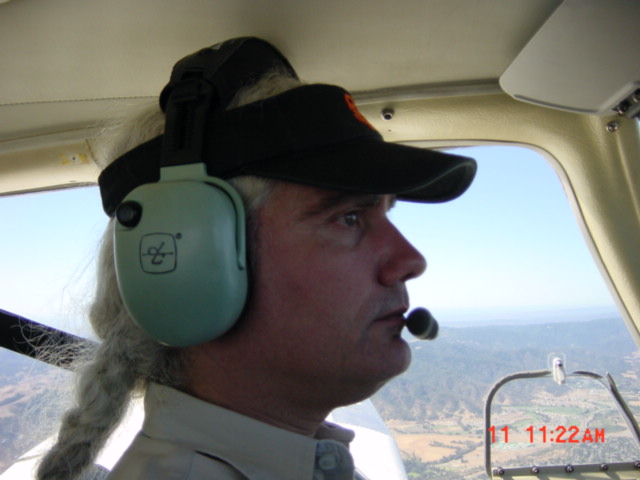
Read about my ongoing flights in my own airplane, a Mooney 231, in my Flight
Log